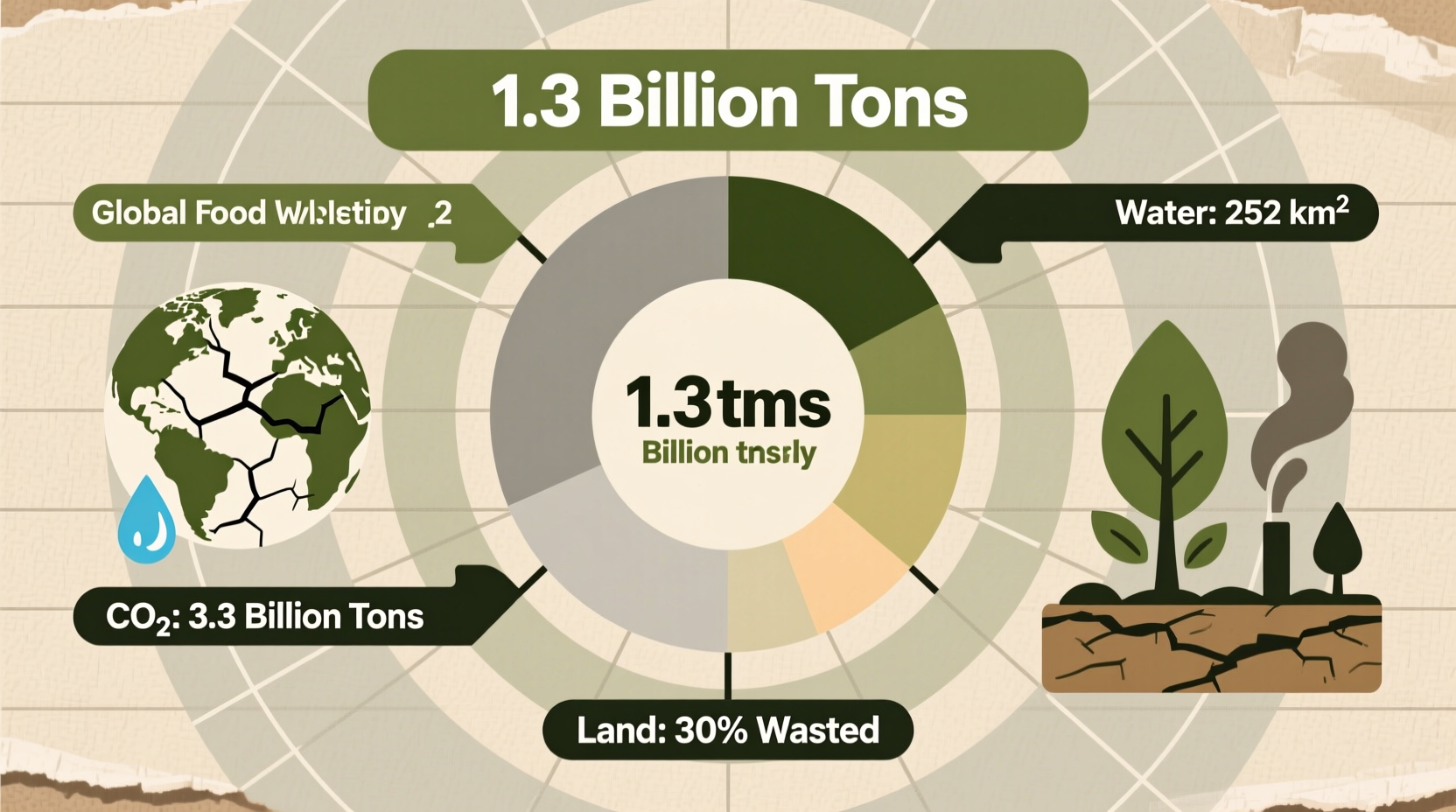Understanding what is food waste and its implications can transform how you manage groceries, save money, and contribute to environmental sustainability. This guide delivers actionable insights backed by global research to help you recognize waste patterns and implement effective reduction strategies.
Defining Food Waste: Beyond Simple Discards
Food waste specifically describes edible food intentionally discarded or spoiled at retail and consumer levels. This differs from food loss, which occurs earlier in the supply chain through production, harvest, storage, and transportation. The United Nations Food and Agriculture Organization (FAO) established this critical distinction in their 2011 global assessment, creating standardized measurement frameworks still used today.
| Term | Stage | Primary Causes | Global Impact |
|---|---|---|---|
| Food Loss | Production to distribution | Poor infrastructure, limited storage, transportation issues | 60% of waste in developing economies |
| Food Waste | Retail to consumption | Over-purchasing, cosmetic standards, expiration confusion | 40% of waste in developed economies |
How Food Waste Evolved: A Historical Timeline
The concept of food waste definition and meaning has transformed significantly over recent decades. Understanding this evolution reveals why current reduction strategies work:
- 1970s-1990s: Food waste viewed as inevitable byproduct of industrialized agriculture with minimal tracking
- 2000-2010: First systematic measurements emerge through EU and UN initiatives
- 2011: FAO publishes landmark "Global Food Losses and Waste" establishing standardized definitions
- 2015: UN Sustainable Development Goals include Target 12.3 to halve food waste by 2030
- 2020s: Technology solutions (AI inventory management, blockchain tracking) become mainstream
Where Food Waste Happens: Context Boundaries
When exploring what food waste means in everyday life, location and economic context dramatically influence waste patterns:
- Developed economies: 40% of waste occurs in households (WRAP, 2022). Supermarkets discard 10% of edible produce due to cosmetic standards (ReFED).
- Developing economies: 60% loss happens during harvest and storage due to inadequate infrastructure (FAO).
- Restaurants: Commercial kitchens generate 22-30 billion pounds annually in the US alone (EPA).
- Households: Average family wastes $1,500 yearly on uneaten food (USDA).
Why Food Waste Matters: Environmental and Economic Impacts
If food waste were a country, it would rank third in global greenhouse gas emissions behind China and the US (Project Drawdown). The environmental toll includes:
- Wasted water resources: 25% of all freshwater used in agriculture supports uneaten food
- Land use inefficiency: 1.4 billion hectares (28% of world's agricultural land) produces wasted food
- Economic loss: $940 billion annually in global economic impacts (World Resources Institute)

Practical Solutions: Reducing Waste at Every Level
Understanding what is considered food waste empowers you to implement these evidence-based strategies:
For Households
- Conduct weekly "use-it-up" meals targeting leftovers (saves average family $50/week)
- Store produce properly: Keep potatoes and onions separate, store herbs in water
- Understand date labels: "Best by" indicates peak quality, not safety (USDA)
For Businesses
- Implement dynamic pricing for near-expiration items (reduces waste by 33%, WRAP)
- Donate surplus through programs like Feeding America (qualifies for tax benefits)
- Track waste patterns using apps like Winnow (reduces kitchen waste by 50%)
Measuring Your Impact: Simple Tracking Methods
Start with these actionable steps to understand your personal contribution to food waste statistics and facts:
- Waste audit: Track discarded food for one week using categories (spoilage, plate waste, preparation scraps)
- Shopping strategy: Plan meals before shopping and stick to your list (reduces impulse buys by 30%)
- Portion control: Use smaller plates and serve modest portions (reduces plate waste by 20%)
These practical approaches address the core question of what is food waste prevention while delivering immediate financial benefits. Communities implementing comprehensive reduction programs typically see 20-40% waste reduction within 18 months (EPA Food Recovery Challenge).
What is the difference between food loss and food waste?
Food loss occurs during production, harvest, storage, and transportation (primarily in developing economies), while food waste happens at retail and consumer levels (more common in developed countries). The distinction helps target appropriate solutions for each stage.
How much food waste is generated globally each year?
Approximately 1.3 billion tons of edible food is wasted annually worldwide, representing one-third of all food produced for human consumption. This equates to 17% of all food available at the consumer level being discarded.
What are the main causes of household food waste?
Top causes include over-purchasing, improper storage leading to spoilage, confusion about date labels ("best by" vs "use by"), and cooking larger portions than needed. Meal planning and proper storage techniques can reduce household waste by 25-30%.
How does food waste impact the environment?
Food waste generates 8-10% of global greenhouse gas emissions. When discarded food decomposes in landfills, it produces methane—a greenhouse gas 28 times more potent than CO2. Additionally, wasted water, land, and energy used in food production contribute significantly to environmental degradation.
What can I do to reduce food waste at home?
Implement meal planning, store food properly (learn optimal conditions for different produce), understand date labels, use leftovers creatively, and consider composting inedible scraps. These simple practices typically reduce household food waste by 20-40% within months.











 浙公网安备
33010002000092号
浙公网安备
33010002000092号 浙B2-20120091-4
浙B2-20120091-4